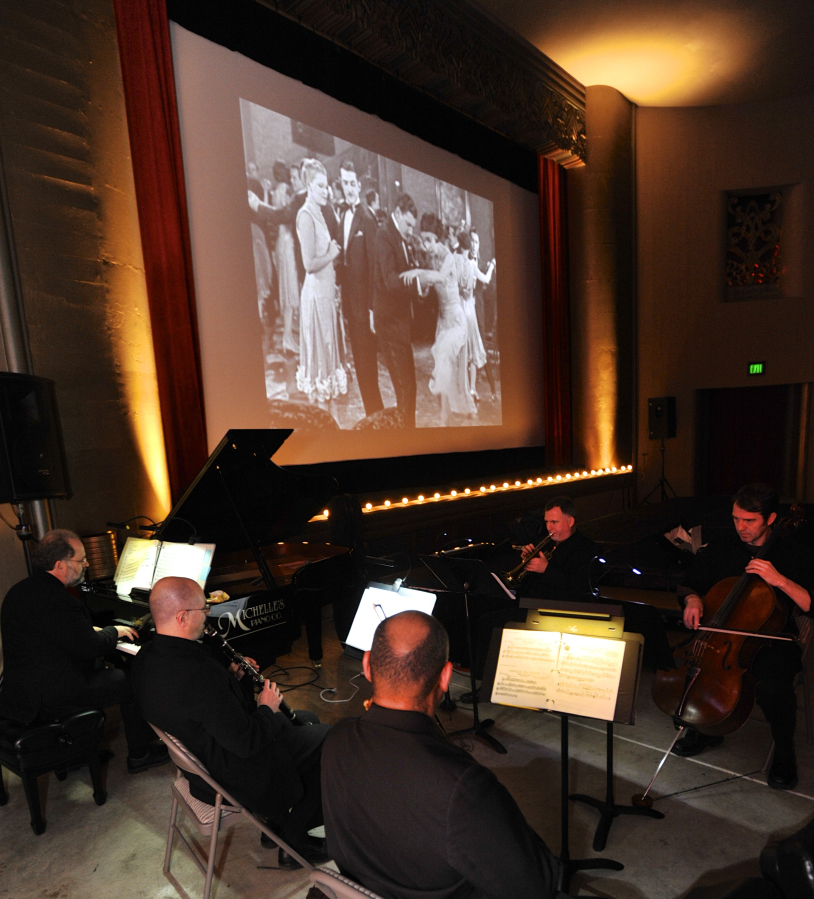The way Rodney Sauer hammers musical scores together is not unlike the way Buster Keaton hammers a house together in the silent movie “One Week.”
With one crucial difference: Keaton’s project is a comedic disaster, while Sauer’s artistic projects have built him a fascinating niche career.
Sauer is one of the world’s premiere silent-film musicians and score arrangers. He’s also a composer and improviser, but his real renown has come from weaving together prefabricated “scene scores” from a century ago, and leading his own small orchestra through live accompaniments of silent film screenings.
Next Sunday, you can see Sauer make that magic live at the Kiggins Theatre in downtown Vancouver — with one important difference: Instead of his own group, the Mont Alto Motion Picture Orchestra, based in Boulder, Colo., he’ll be working with musicians from the Vancouver Symphony Orchestra.
If You Go
• What: Vancouver Symphony Orchestra’s Chamber Series presents three silent film classics
• When: 3 p.m. March 19.
• Where: Kiggins Theatre, 1011 Main St., Vancouver.
• Tickets: $25; $5 for students.
• Contact: http://vancouversymphony.org, 360-735-7278.
• Coming up: The VSO Chamber Series returns to the Kiggins with musical accompaniment for the classic Oregon silent film “City Girl,” a melodramatic love story filmed in Pendleton in 1929. 3 p.m. May 21.
The connection arose because Igor Shakhman, the VSO’s manager and lead clarinetist, used to live in Boulder, where he crossed paths with Sauer. “One time when our clarinetist couldn’t do a tour, Igor subbed with us and had a ball,” Sauer said. “When he joined the Vancouver Symphony, he asked if I could come up there and do the same thing, but with Vancouver musicians.”
Not a problem. A couple of rehearsals is all it takes — when you’ve got talented musicians who sight read well and “recover well” when they must, Sauer said. “It’s fun to watch them work. They’re professionals, and they do a great job.”
For the March 19 performance, three classic silent comedies will be accompanied by VSO musicians Shakhman on clarinet, Stephen Shepherd on violin, Erin Ratzlaf on cello, Bruce Dunn on trumpet — and Sauer himself on piano.
Scene by scene
Sauer was a student at the University of Colorado at Boulder when he stumbled upon a collection of silent film scores in the library there.
He was not a silent-film buff, he said. But he was fascinated to discover a virtually unknown trove of music that works in a totally different way than modern movie scores do.
“None of this music was written for a particular film,” he said. “Composers and music publishers published music for different kinds of scenes. You could buy music for a storm scene, a love scene, a chase scene.
“It was intended to be a library. You watch a movie, you pick music for each scene out of the library and put together your own score,” he said.
This was a time when big theaters in big cities competed for audiences by making their offerings the finest, fanciest extravaganzas possible. A small town with a single theater might provide humble organ or piano accompaniment, Sauer said, but metropolitan areas saw virtual “arms races” among theaters to see who could promise the biggest orchestra as part of the most amazing show.
This was the way people heard movies, from the dawn of the technology in the late 1800s through the rise of “talkies” in the early 1930s. That’s approximately 40 years of silent films — and something like 10,000 individual pieces of music to choose from, Sauer said.
“It’s a huge, daunting repertoire,” he said — and, every once in a while, he discovers another archive.
Dancing dinosaur
On Sunday, you’ll be able to hear Sauer and the VSO musicians draw from that repertoire while Buster Keaton builds his dream house in “One Week” (1920), Fatty Arbuckle finds wedded bliss in “Fatty and Mabel Adrift” (1916), and “Gertie the Dinosaur” dances on command (1914).
That dancing dinosaur can be a problem for musicians, Sauer said, because the original silent film included pauses in the action while Gertie’s live in-person “trainer” — animator Winsor McCay, famous at the time as “America’s Greatest Cartoonist” — stood at a podium and issued commands. (Gertie would usually cooperate but occasionally got amusingly rebellious or distracted, as extinct species often do.)
When that live back-and-forth gave way to black on-screen placards bearing the dialog, he said, nobody edited out the delays for McCay to speak his lines. Gertie got trapped in a time warp of awkward pauses.
Those delays are gone in this rendition, Sauer said. “I’m going to take on the role of Winsor McCay,” he said, and talk to Gertie from the podium. His piano usually starts the music, he said, but for this film the other musicians will have to get along without him.
Sauer said he found the perfect score to accompany the moves of a prehistoric creature: a jolly Ragtime tune called “The Evolution Rag.”




